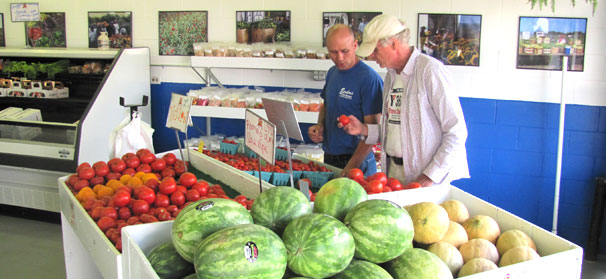

Feb 24, 2012Use free Google tools to help grow your business
In a presentation given at the Southeast Regional Fruit and Vegetable Conference in Savannah, Ga., in January, Kyle Hensel and Drew Tonsmeire from the University of Georgia Small Business Development Center talked about all of the free tools available to farmers and farm marketers from Google, and how these tools can increase traffic and profit for your farm.
Searching
Google is the most popular search engine, used more than 80 percent of the time, according to Statowl.com.
When a search is done on Google, there are different types of results. When a search is done, a keyword or query is entered and the results come out as organic, advertisements and locations. Organic refers to results that come up based strictly on the search itself, advertising refers to Adwords and locations refers to the map function of Google that can give directions and more.
“Statistics show that the result closest to the top gets the most results,” Hensel said. “So, we all want to be closest to the top of the results page of a keyword search. You can show up in the organic results, pay for advertising or show up in the location section.”
A number of factors go into getting to the top of the results page organically, most of which are tracked by Google to be used for ranking.
The location of your market is important, and you should check the location on Google. The online mapping tool may not always be accurate, Hensel said.
SEO
Getting to the top of the results page depends on several things. Search engine optimization (SEO) is a phrase often heard but often misunderstood, Hensel said. One key element is choosing keywords that are highlighted in your website listing that are picked up in queries. This is different for each operating system, so it depends on your website and how it was built.
“Common keywords for SEO would include your farm’s name, produce that you sell, your location and more,” Hensel said.
But it isn’t just the keywords that make up SEO, Hensel said. Google rates your webpage based on several factors. The higher the rating, the closer your page gets to the top. Fresh content is a major factor.
“Traffic goes up 200 percent if you update your website just four times a month,” he said. “Blogs are great for this.”
Links from other websites are also key. The more active links you have with other sites, the better. It also helps to make all of your content linkable, to drive traffic to your site. Other tips include using email and social media for communication and promoting your website anywhere you can. It is important to note that SEO doesn’t happen overnight, Hensel said. It takes time, but it works.
Webmaster Central
Webmaster Central is a tool on Google that allows you to submit your sitemap and contains actionable information on how people and Google see your website, Hensel said. It is also the best place to find any new tools Google has available.
Google Places
When people search Google, 20 percent of the time it is related to location. As a business owner, you can add and edit your listing using Google Places, Hensel said. A Places page gives information that you enter, so be specific about who you are and what you do. It is also a place you can post coupons and specials. You can use this tool to track where your customers have come from, and measure the impact of your site and listings.
Analytics
Google analytics is a tool that can tell you how many people have found your site and where they are coming from, Hensel said. It also tells you how many pages they viewed while they were on your site, referring to “bounce rate.” Bounce rate is one of the factors that go into how Google ranks your site. The more pages viewed and time spent on your site, the higher the ranking.
You can also create an alert that notifies you any time someone does a search for terms you specify. These terms can be anything, but it is best to tailor them to your business, Hensel said.
Adwords
Google Adwords is a system of paid advertising to get your name higher on the results pages. It is basically a keyword search auction, Tonsmeire said. You decide how much you’re willing to spend to get your keyword ad placed according to set criteria that you establish.
The ads appear at the top of the search order, as well as in a column on the right side of the screen. You tell Google how much you’ll pay per click, and Google takes that and your site’s ranking into account to determine your ad’s position on the search page.
“Just paying for the ad alone won’t get you to the top of the results,” Tonsmeire said. “You need to do everything you can to have a high ranking with Google, too. You can say you’re willing to pay more for each click, but remember, you have no control over how many times your site gets clicked on, and clicks don’t always mean sales. Spend wisely on Adwords.”
Building a successful Adwords campaign involves proper use of keywords, Tonsmeire said. Get attention with a good ad title. Brainstorm about the description you write, since space is limited. Include a phone number if you want. Point out what people can expect by coming to your market and identify where you are located.
By Derrek Sigler, Assistant Editor














